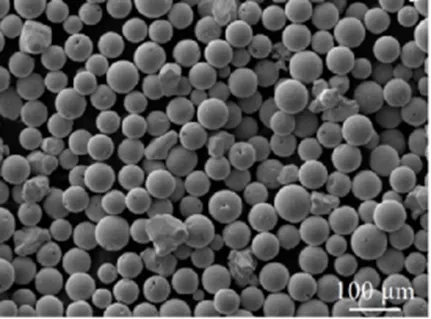Introduction to CLC Foaming Agents: Enabling High-Performance Aerated Concrete Equipment
CLC (Mobile Lightweight Concrete) foaming agents have become a transformative element in modern-day building products, enabling the manufacturing of ultra-lightweight, thermally reliable, and structurally feasible concrete systems. These surfactant-based additives produce steady air bubbles within cementitious mixtures, developing a permeable microstructure that significantly minimizes density while keeping compressive strength. As worldwide demand grows for energy-efficient buildings and low-carbon facilities, CLC foaming representatives are playing a progressively essential role in redefining concrete modern technology toward sustainability and performance optimization.
(CLC Foaming Agent)
System and Chemistry Behind CLC Foaming Professionals
At the core of CLC technology is the lathering representative– a surface-active material that reduces the surface tension of water, allowing air to be entrained into a fine, uniform foam. Typically utilized chemical families include protein-based, artificial surfactants, and customized lignosulfonates, each offering distinct bubble stability, compatibility with concrete hydration, and environmental impact accounts. When introduced right into a pre-mixed slurry of cement, sand, and water, the foam integrates right into the matrix, creating countless separated gaps that improve insulation buildings without endangering structural honesty. This procedure makes it possible for precise control over density, commonly ranging from 300 to 1600 kg/m THREE.
Benefits of CLC Modern Technology in Modern Building
The integration of CLC lathering representatives brings numerous benefits to building and construction practices. By reducing product weight, they reduce structural tons on structures and structures, allowing for thinner pieces and taller building styles. The high porosity of CLC concrete provides excellent thermal and acoustic insulation, minimizing HVAC energy intake and improving interior comfort. In addition, its fire resistance, mold resistance, and ease of handling make it excellent for retrofitting, prefabrication, and disaster-resilient real estate. In developing economic climates, CLC innovation provides an affordable option to standard masonry, supporting quick urbanization with marginal source intake.
Applications Across Civil Engineering and Facilities Sectors
CLC lathering agents sustain a large range of applications past common wall surface panels and floor screeds. They are extensively made use of in roof covering insulation, trench backfilling, bridge joint gap filling, and geotechnical stablizing where lightweight yet load-bearing fillers are needed. In eco-friendly building jobs, CLC blocks add to attaining LEED accreditation by improving energy effectiveness and lowering personified carbon. Additionally, their use in floating concrete structures, noise barriers, and cold storage facilities demonstrates the convenience of this innovation throughout varied engineering settings.
Technological Technologies Driving CLC Performance Enhancements
Current advancements in CLC frothing agent chemistry and application strategies have actually considerably improved the mechanical and durability features of oxygenated concrete. Nanoparticle-modified foams, crossbreed frothing systems integrating healthy protein and synthetic surfactants, and bio-based options stemmed from plant essences are obtaining traction due to their improved stability and eco-friendliness. Furthermore, electronic dosing systems and AI-assisted foam generation devices allow for real-time changes during mixing, making sure constant quality throughout large-scale pours and complex building kinds.
Environmental Effect and Sustainability Considerations
One of the most compelling aspects of CLC technology hinges on its alignment with circular economic climate principles. By incorporating industrial byproducts such as fly ash, slag, and crushed glass right into the slurry mix, CLC minimizes dependence on virgin products and diverts waste from landfills. Foaming agents themselves are being reformulated to reduce poisoning and biodegradability, addressing issues about seeping and long-term ecological effects. Additionally, the reduced transport footprint of light-weight CLC elements contributes to decrease carbon monoxide two exhausts throughout the supply chain, reinforcing its function in sustainable building communities.
Market Dynamics and Global Sector Expansion
( CLC Foaming Agent)
The marketplace for CLC frothing representatives is experiencing robust development, particularly in Asia-Pacific, the Middle East, and Africa, where there is strong government support for economical housing and climate-resilient infrastructure. Principal in the building chemicals market are investing heavily in R&D to create exclusive frothing solutions customized for different climatic conditions and regulatory requirements. Strategic partnerships in between product providers, design firms, and academic organizations are accelerating product advancement and expanding adoption pathways. As building regulations progress to accommodate light-weight concrete innovations, the demand for advanced CLC foaming representatives is anticipated to surge better.
Obstacles and Technical Limitations in Practical Implementation
Regardless of its several benefits, the widespread adoption of CLC frothing agents faces several technical and logistical obstacles. Foam instability under adverse weather conditions, inappropriate treating bring about shrinking fractures, and restricted recognition among professionals continue to be relentless issues. Variability in basic material top quality– specifically concrete and sand– can influence foam retention and last toughness advancement. There is likewise a demand for standard screening procedures and training programs to make sure correct implementation across different project types. Attending to these gaps calls for coordinated initiatives between industry stakeholders, policymakers, and scholastic scientists.
The Future Overview: Assimilation with Smart Building And Construction and Eco-friendly Building Trends
Looking ahead, CLC lathering representatives will play a crucial role in shaping the next generation of smart and lasting construction. Their assimilation with Structure Information Modeling (BIM), automated batching systems, and IoT-enabled surveillance tools will allow real-time quality assurance and anticipating upkeep. In tandem with net-zero structure methods, CLC technology will support the creation of ultra-low-energy frameworks that integrate thermal effectiveness with structural strength. As additive production and 3D printing gain momentum, lathered concrete blends enabled by CLC lathering representatives may unlock new design opportunities and building and construction approaches formerly unattainable with conventional products.
Vendor
Cabr-Concrete is a supplier of Concrete Admixture with over 12 years of experience in nano-building energy conservation and nanotechnology development. It accepts payment via Credit Card, T/T, West Union and Paypal. TRUNNANO will ship the goods to customers overseas through FedEx, DHL, by air, or by sea. If you are looking for high quality Concrete Admixture, please feel free to contact us and send an inquiry.
Tags: foaming agent, foamed concrete, concrete admixture
All articles and pictures are from the Internet. If there are any copyright issues, please contact us in time to delete.
Inquiry us


